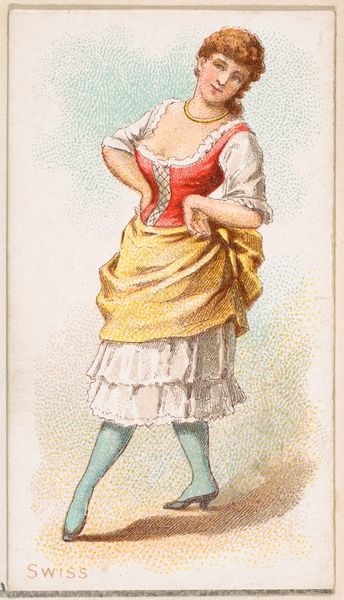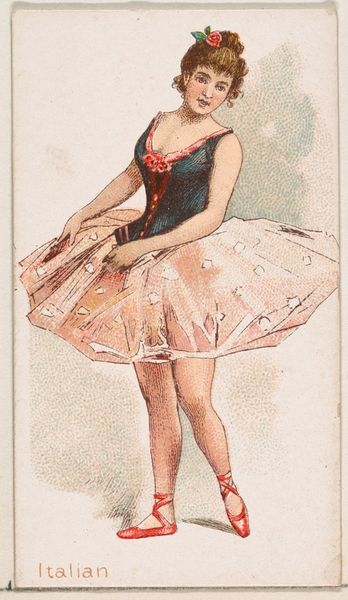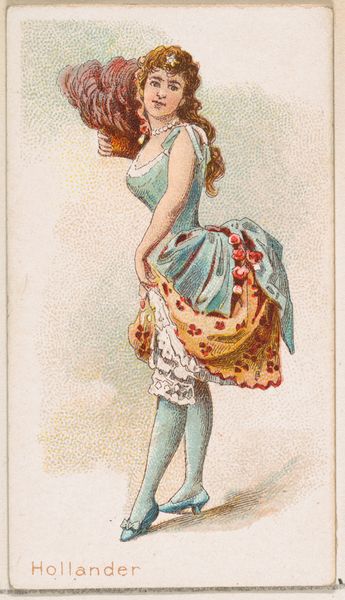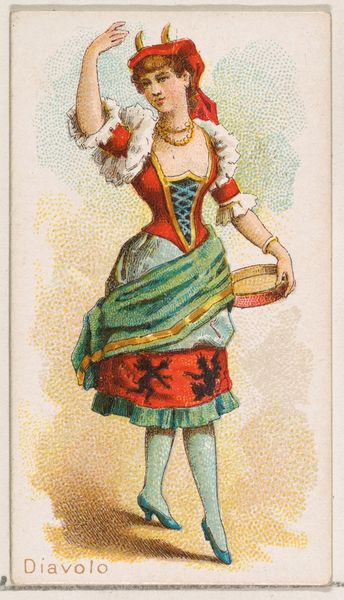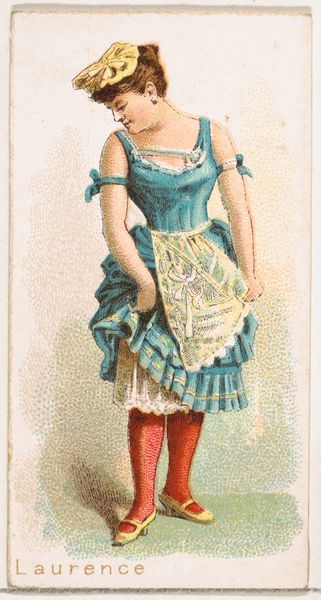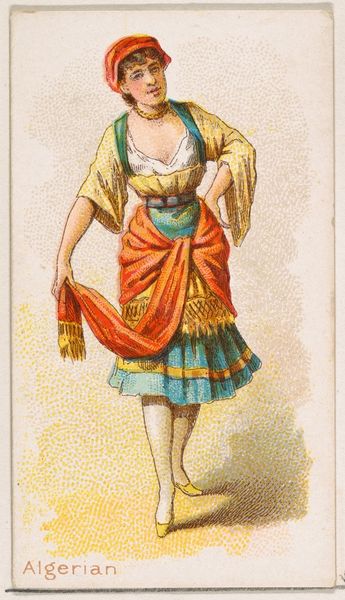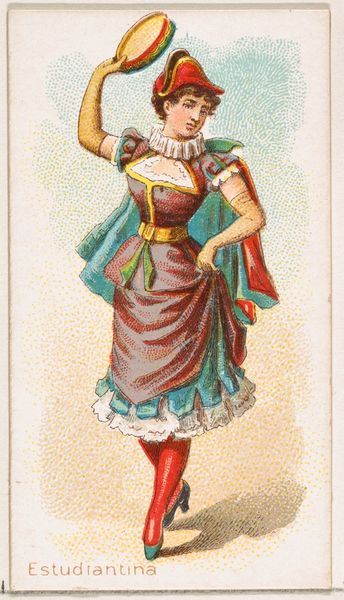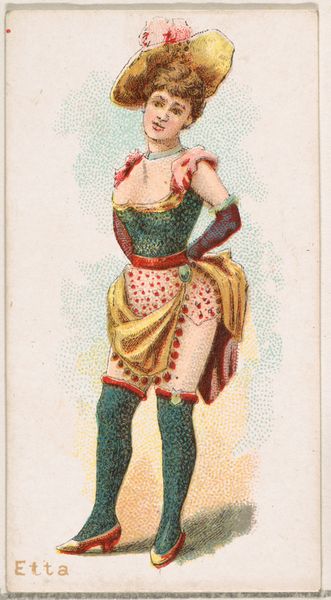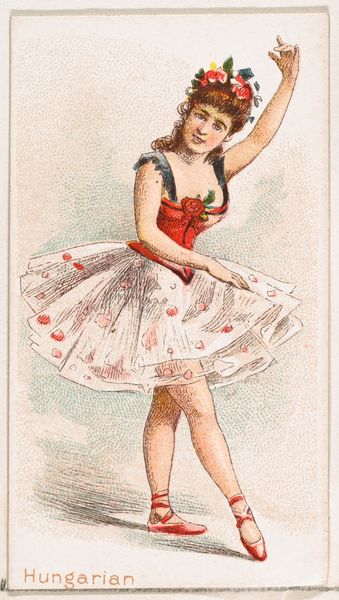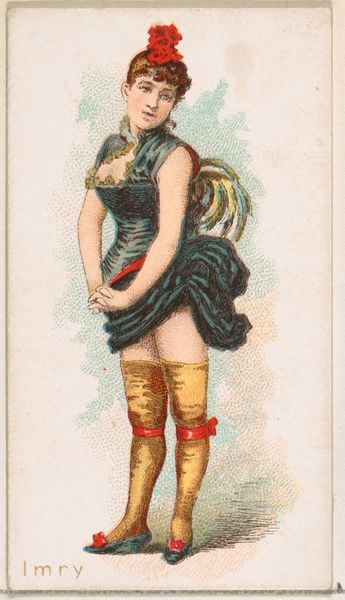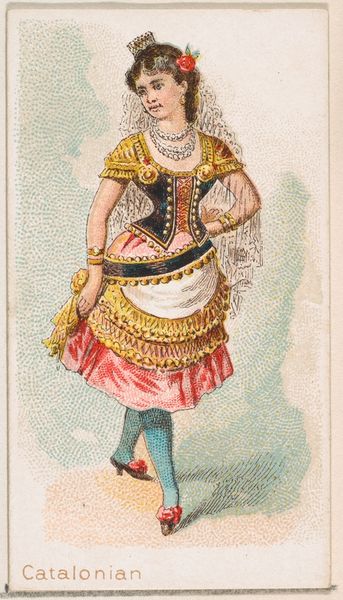
Greek Dancer, from the Dancing Women series (N186) issued by Wm. S. Kimball & Co. 1889
0:00
0:00
#
portrait
# print
#
coloured pencil
Dimensions: Sheet: 2 11/16 × 1 7/16 in. (6.9 × 3.7 cm)
Copyright: Public Domain
Editor: Here we have a print titled *Greek Dancer, from the Dancing Women series*, made around 1889 by Wm. S. Kimball & Co. It seems to be a drawing, maybe coloured pencils or etching… The figure is so vibrant and full of life. What's your read on this artwork? Curator: I’m struck by the blend of cultural elements at play. The title labels her as "Greek," yet her costume hints at a confluence of Orientalist fantasies that were fashionable in the late 19th century. It speaks volumes about how the West viewed the East, exoticizing and homogenizing diverse cultures into a single, marketable image. Note the red fez she's wearing; does that seem classically Greek to you? Editor: Not particularly. It makes me wonder about the accuracy of the depiction. It feels like an amalgamation of different cultural signifiers, like a collage. Curator: Precisely. This wasn't about ethnographic accuracy; it was about constructing a visually stimulating image that catered to Western tastes. The dance itself becomes a symbol – is it an expression of freedom, or is it a performance staged for an audience with specific expectations? The symbol depends entirely on cultural perception. Editor: That makes sense. So the ‘Greek’ in the title isn’t literal but part of this construction of an exotic ‘other’? The symbolism here seems so performative now. Curator: Absolutely. And consider how these images circulated, likely as collectible cards included with tobacco products. The dancer becomes a commodity, embodying fleeting pleasure and escapism for consumers. A commercial symbol detached from its original cultural roots. What do you make of that dynamic? Editor: It makes me think about cultural appropriation and the power dynamics involved in representing another culture. Curator: Indeed. By decoding these layers of symbolism, we gain insight not only into the artwork itself but also into the societal values and power structures of the time. Editor: I hadn't considered it that way, seeing it more as an artistic rendering of someone dancing. I’ll never look at trading cards the same way! Curator: Nor will I, necessarily! Art and culture are dynamic.
Comments
No comments
Be the first to comment and join the conversation on the ultimate creative platform.
